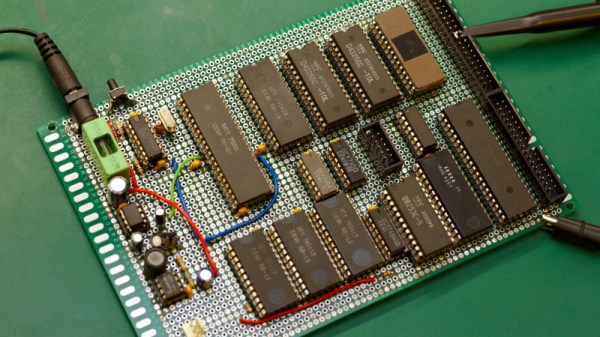What exactly qualifies as comfort food is very much in the palate of the comfortee. Grilled cheese may not work for everyone under every circumstance, but we’ll risk a bet that the gooey delicacy is pretty close to universal, especially when you’re under the weather.
But if you’re too sick to grill up your own and don’t have anyone to do it for you, this grilled cheese sandwich-making robot might be the perfect kitchen accessory. Dubbed “The Cheeseborg” and built as a semester project by [Taylor Tabb], [Mitchell Riek], and [Evan Hill] at Carnegie-Mellon University, the bot takes a few shortcuts that might rankle the grilled cheese purist. Chief among these is the use of a sandwich press rather than a plain griddle. We understand that this greatly simplifies the flipping problem, but to us the flipping, especially the final high arcing double backflip onto the sandwich plate, is all part of the experience. Yes, a fair number of sandwiches end up going to the dog that way, but that’s beside the point.
As realized, Cheeseborg feeds bread and cheese from stacks using a vacuum arm, sprays the grill with butter, and uses a motorized arm to push the uncooked sandwich into the press. At the peak of grilled perfection, the press opens and ejects the sandwich to a waiting plate. As an added bonus, the whole thing is Google Assistant enabled so you can beseech Cheeseborg to fix you a sandwich from your sick bed. See it in action below.
This is far from the first culinary robot to grace our pages. There was the recent CNC sausage bot, we’ve seen plenty of pancake bots, and even [Ben Krasnow] once automated cookie making.
Continue reading “Automate Your Comfort Food Prep With An IoT Grilled Cheese Robot”















